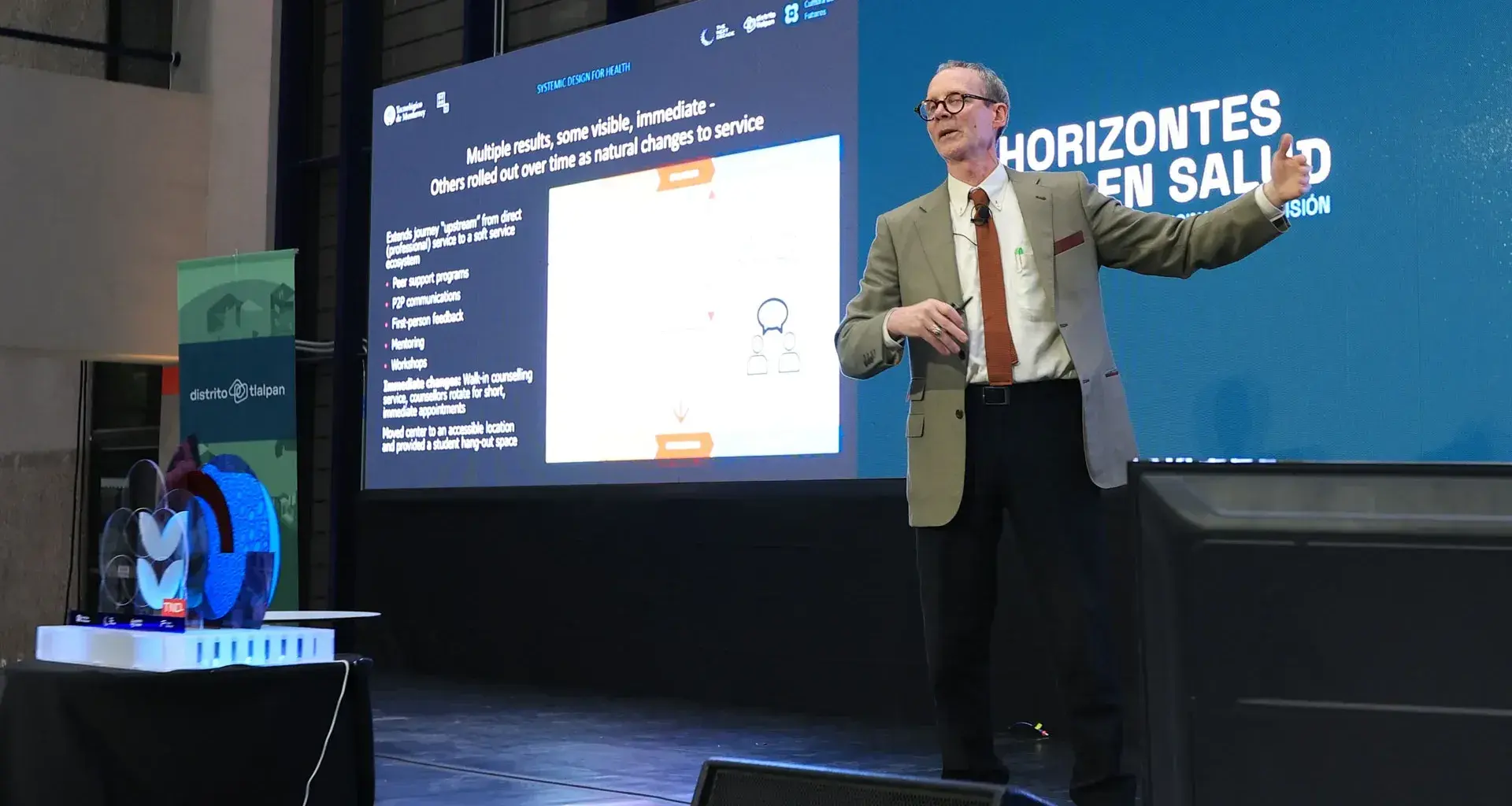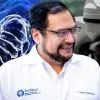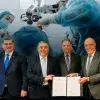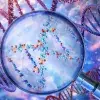Advances in healthy aging and precision medicine were two of the main themes of the 2025 edition of The Next Decade: Horizons in Health, organized by Tec de Monterrey, which brought together specialists to propose solutions in this field.
During the encounter, the main challenges facing the country’s healthcare system were also analyzed, as well as the strategies needed to improve quality of life and guarantee more equitable access to advanced medical services.
The Next Decade is a Tec de Monterrey initiative that brings together key voices from the innovation and entrepreneurship ecosystem with the goal of generating proposals that will improve quality of life and transform health systems.
CONECTA highlights some of the most outstanding aspects of this edition.
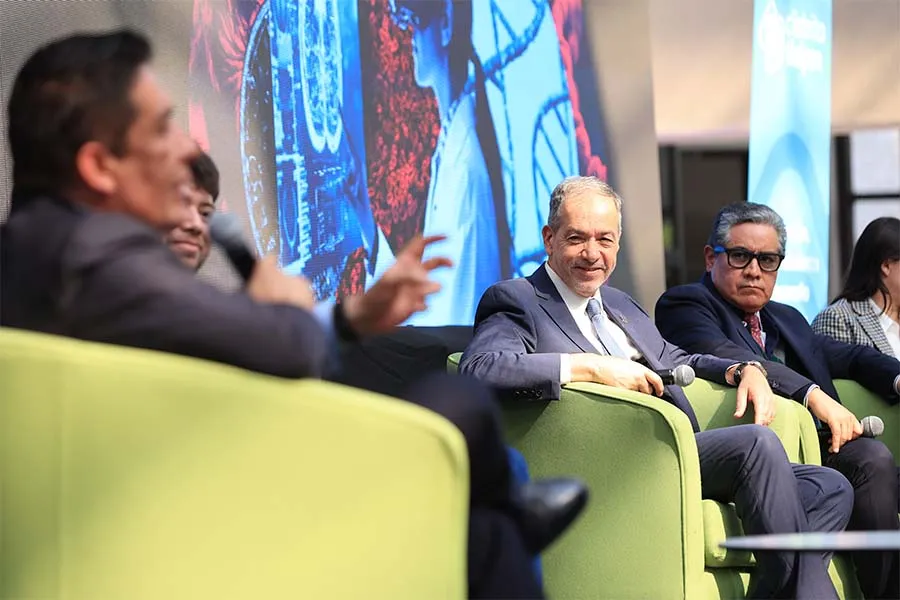
How the Tec is exploring aging
From the intricacies of the genetic code to the development of materials that heal wounds, researchers from the Tec presented key advances in the field of aging.
Projects range from exploring the molecular mechanisms underlying neurodegenerative diseases to innovative solutions for improving skin healing in the elderly.
1. Intron retention: A clue to aging
Researchers Samarta Carrillo and Jesús Gómez Montal are leading a study that analyzes how intron retention, a form of genetic modification, affects how genes are expressed over time.
The team found that intron retention can change with age, diet, and across different organs, suggesting that it is a key mechanism in aging.
Another clue points to a gene related to longevity in bowhead whales, a species known for its extraordinary lifespan.
This suggests that understanding the regulation of that gene (and its intron retention) could offer fundamental clues about how some species manage to live so long in good health.
2. Biomaterials that help to heal chronic wounds
The Tec’s Biotech laboratory is developing a line of polymer materials designed to heal chronic wounds that mainly affect the elderly or people with reduced mobility.
The team has developed micro- and nanofiber dressings with oregano and carvacrol essential oils, compounds with antimicrobial properties.
“Our goal is to control the release of the active substance to avoid cell toxicity and eliminate resistant bacteria.”
They have also developed bioabsorbable nanoparticles and microneedles capable of penetrating directly into the skin to release drugs locally, which improves effectiveness and reduces side effects.
3. Adipose tissue: A key factor in cardiovascular diseases
Dr. Óscar Armando Pérez, a researcher at the Tec and the National Institute of Cardiology, is exploring how adipose tissue dysfunction contributes to diseases such as type 2 diabetes and atherosclerosis.
“HDL lipoproteins can enter cells and alter their gene expression. This may help explain regional differences in how vascular damage develops.”
His study aims to understand how to prevent fat cells from hypertrophying without adequate vascularization, which leads to chronic inflammation and metabolic disturbances.
In other words, the study may help understand how to prevent early cellular deterioration, which could:
- Improve quality of life during old age.
- Reduce the onset of age-related diseases, such as type 2 diabetes and atherosclerosis.
4. TAU protein and Alzheimer’s disease: What happens in the aging brain
The Tec’s Miguel Ángel Ontiveros closed the symposium by presenting a study on TAU proteins, whose alterations are implicated in neurodegenerative diseases such as Alzheimer’s.
Using transgenic mouse models and samples from Mexican patients, the team has observed how the function of this protein changes with age.
“TAU ceases to perform its structural function and begins to form toxic aggregates known as neurofibrillary tangles.”
Understanding how and when TAU changes allows us to detect early signs of neurodegeneration and potentially prevent or delay damage.
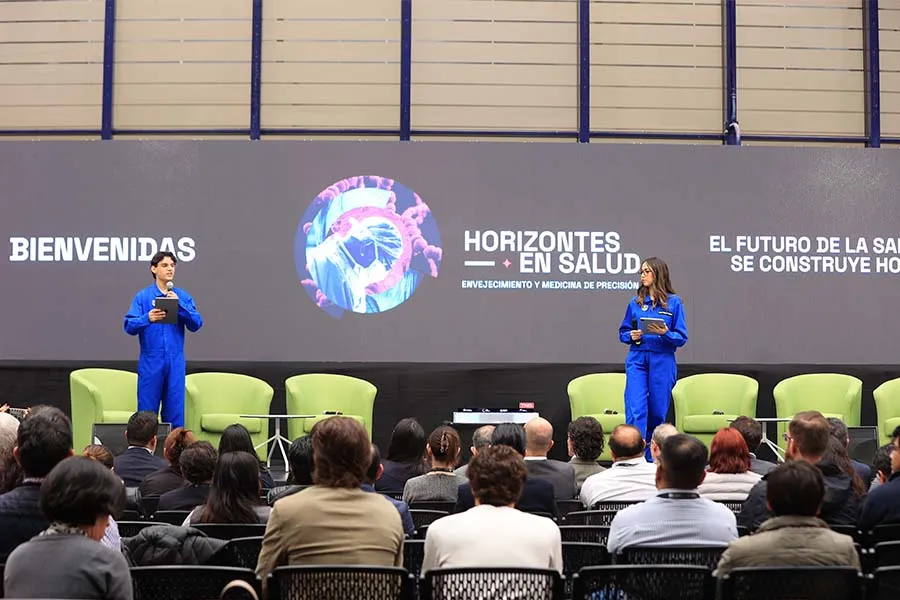
Precision medicine: Personalized treatments
How is precision medicine revolutionizing the treatment of diseases?
With personalized treatments aimed at delivering the right drug at the right time, this new medical vision was the focus of the presentation by Luis Herrera, National Dean of the School of Medicine and Health Sciences at the Tec.
Precision medicine aims to move away from the traditional “one pill fits all” model to make way for treatments tailored to each patient.
“The goal is to find the right treatment at the right time.”
“Not all patients with the same disease respond the same way to treatment.” In fact, “there’s a lot of diversity” within the same condition, such as cancer.
Precision medicine is based on an in-depth analysis of each person’s genetics, medical history, lifestyle, and other factors to design more effective therapies with fewer side effects.
“The idea is to categorize individuals to find medications that are effective without causing adverse side effects.”
This approach has already yielded promising results. For example, in some types of cancer, it has successfully extended the lives of patients who were previously expected to have only a few months left to live.
However, large-scale implementation still faces challenges, including the availability of sufficient and representative genetic data.
This is where Tec initiative the Origen Project comes in to fill this gap.
“We’re creating a database of 100,000 biological samples from the Mexican population.”
“The goal is to make it available to scientists in Mexico and the world to facilitate the study of our population.”
Its importance is clear: in many international studies, the Hispanic population, and the Mexican segment in particular, is underrepresented.
The project focuses on diseases that most frequently affect Mexicans and Latinos, such as cardiometabolic diseases (diabetes, hypertension, and obesity), and is based on the principle that biological differences among populations should be taken into account to develop better treatments.
Furthermore, the approach is complemented by technologies such as artificial intelligence (AI), which makes it possible to analyze large volumes of clinical and genetic data to predict risks and responses to medications.
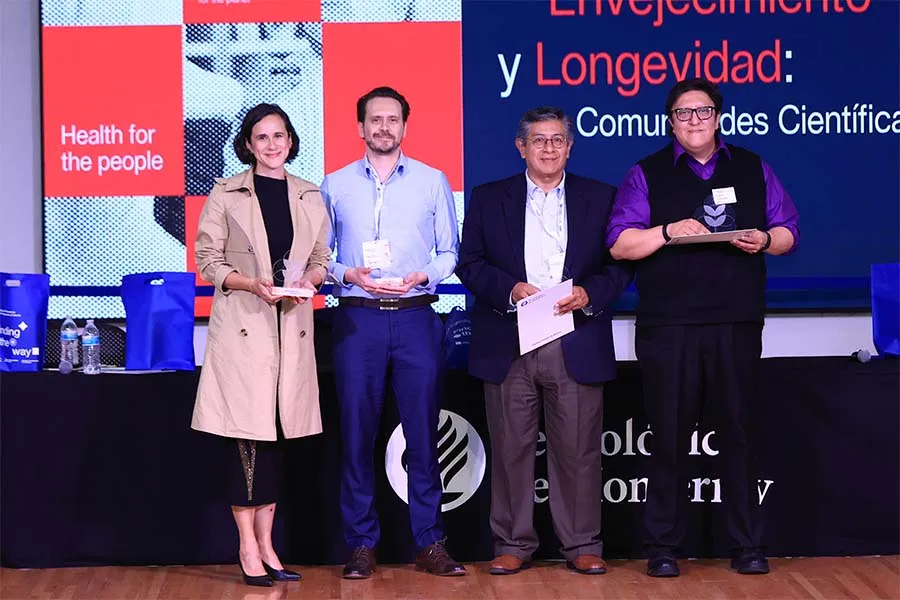
Health in Mexico: The challenge of transforming science into real innovation
Although the country has scientific talent, there are regulatory, cultural, and structural obstacles that hinder the actual impact of science.
The following health specialists spoke about this in the Panel on the Future of Health in Mexico:
- Eduardo Urzúa — Director of University Entrepreneurship at InnovaUNAM
- Juan Armendáriz — distinguished professor in Biomedical Sciences, Tec de Monterrey
- Miguel Cuéllar — Director of Interinstitutional Coordination, National Institutes of Health
- Mirta Monteagudo — Deputy General Director of Industrial Property, Mexican Institute of Industrial Property (IMPI)
- Alejandro Sotero Díaz — Coordinator of the Rotating Medical Internship, National Polytechnic Institute (IPN)
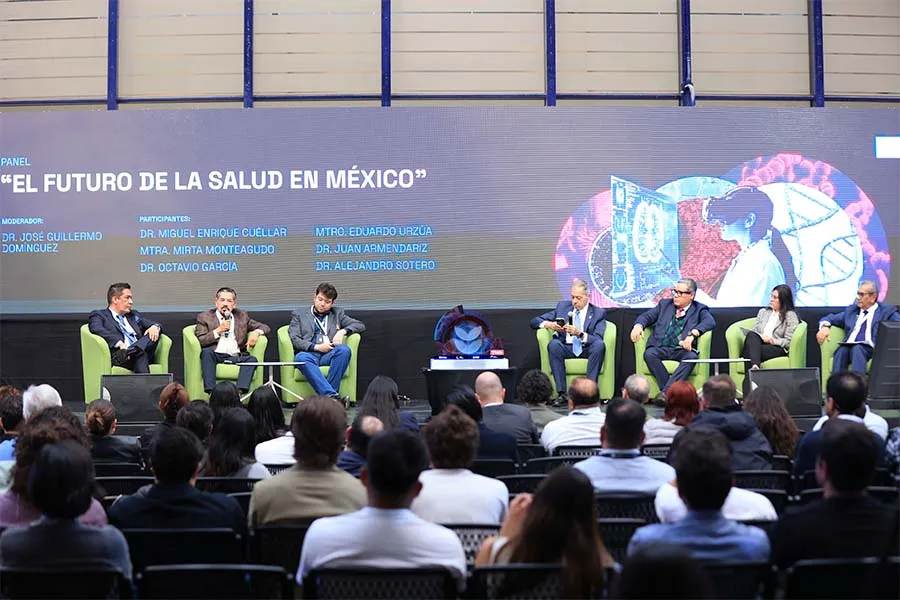
According to the specialists, Mexico requires more than just scientific knowledge; it needs an innovation ecosystem that integrates science, entrepreneurship, and collaboration between government, academia, and industry.
Eduardo Urzúa said that although there is talent, there are “important cultural, regulatory, and structural obstacles that limit the transfer of knowledge to the market and diminish the impact of science.”
“To move forward, it’s necessary to build the necessary trust among the different players in the ecosystem so that they’re encouraged to invest in this type of project because the risk is high and health entrepreneurship requires a lot of time.”
One fact discussed was that 95% of pharmaceutical patents in Mexico belong to foreign companies, which highlights the urgency of strengthening technology transfer and scientific entrepreneurship.
In that regard, “they’re not reaching the market, they don’t translate into economic benefits, and of course, they’re not having an impact on the quality of life of Mexicans,” according to Mirta Monteagudo.
Therefore, the speakers called for reforming the culture and accelerating regulatory processes so that innovations do not get caught up in bureaucracy.
They also talked about the importance of closing the gaps in access to health technologies and reforming medical education with an interdisciplinary and ethical approach.
“We may develop better inventions, but they will likely only reach those who can afford them. Miguel Cuéllar explained that this is why “we need to ensure that these inventions don’t create larger gaps than the ones we already have.”
According to Alejandro Sotero Díaz, “only with a comprehensive and collaborative approach will it be possible to ensure that health education becomes a driving force for the country” to build a more efficient, accessible, and sustainable system.

Redesigning Mexico’s health system based on prevention
“Prevention is the key,” explained systems designer Peter Jones during his presentation Designing the Healthcare System for the Future of Mexico.
His proposal is based on an interdisciplinary vision that combines systemic design, social innovation, and futures thinking to transform Mexico’s healthcare system.
For Jones, the challenges facing the country due to an aging population, increasing chronic diseases, and unequal access to health care translate into:
“Economic impacts compounded by urban-rural disparities, poverty, and inequity. We need to look at these problems because the impacts will become problems that are beyond the ability of basic science and engineering to solve.”
Among the solutions, he spoke about the need for innovative primary care models, community-integrated hospitals, and the use of systemic design tools to make complex decisions.
“I’m interested in prevention, in the management of diseases such as hypertension, type 2 diabetes, and mental health, especially among young people.”
-Decentralized hospitals and social prescribing
Jones highlighted examples of healthcare innovation, such as mobile hospitals and social prescribing, in which family doctors recommend lifestyle changes and social conditions.
“This could really be implemented effectively here.”
He also proposed transforming hospitals into community campuses:
“The idea is for the hospital to reduce its vertical scale and expand out to be part of the community. This idea is already being explored, for example, in Monterrey.”
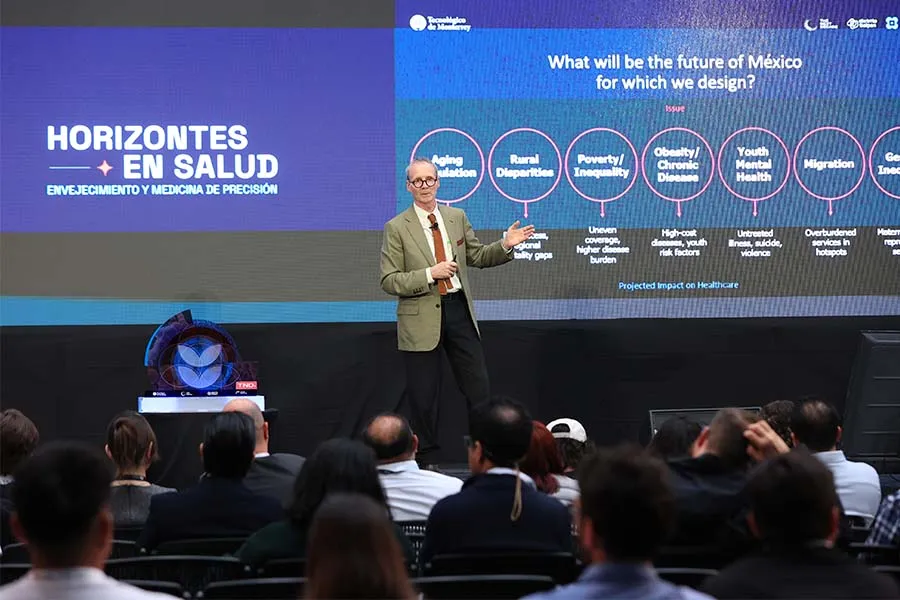
-Design 4.0: From objects to complex systems
During his presentation, Jones explained his Design 4.0 model, an evolution of design thinking that integrates complex systems tools.
“It’s not just about designing artifacts, but also organizations, services, and public policies.”
This approach is applied in projects such as Sea Change, a Canadian initiative to translate clinical guidelines for cardiovascular prevention into practical tools for doctors and patients.
In Mexico, Jones is collaborating on a similar project with TecSalud to design health kiosks where people can learn how to properly measure their blood pressure.
-Opportunities for Mexico
According to Jones, Mexico has various opportunities that could transform healthcare in the country over the next decade, for example:
- The implementation of social prescribing
- New technologies in primary care
- Information platforms in Spanish
- Community clinics, and
- The increased use of WhatsApp as a tool for medical follow-up
“WhatsApp presents a great opportunity. Everyone uses it here. We don’t use it that way in Canada. It could be a powerful tool to maintain communication and perform follow-up with patients.”
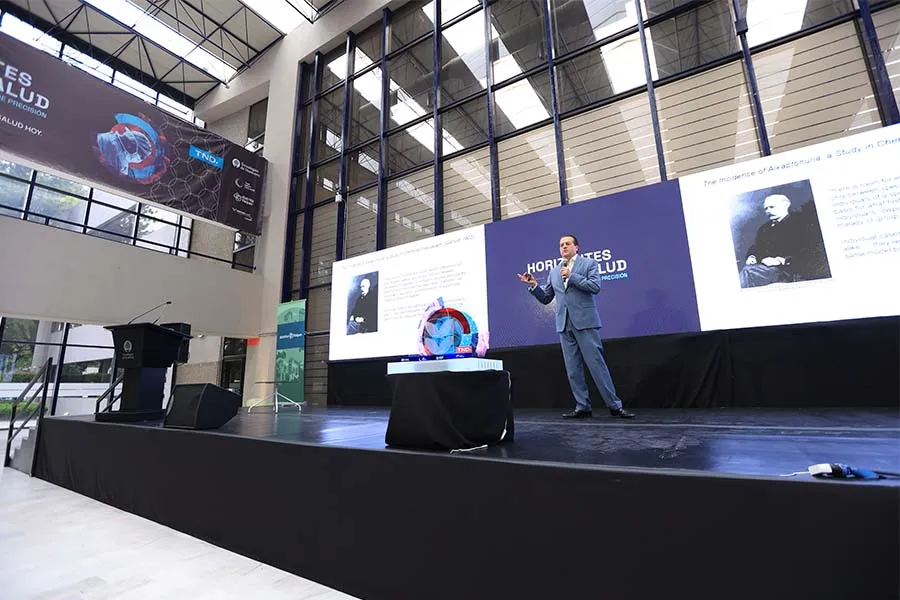
About The Next Decade: Horizons in Health 2025
This fourth edition of The Next Decade was held at Tec Mexico City from June 25 to 26 with the central theme “Horizons in Health,” a commitment to imagine and build solutions to the major challenges facing the sector.
According to Laura Segarra, Director of Strategic Living for Innovation Districts and leader of The Next Decade:
“This edition focused on creating significant innovations in healthy aging and precision medicine through interdisciplinary collaboration to improve quality of life and promote equity of access to healthcare.”
During the two days of the event, keynote speeches, discussions, and collaborative activities were held with that focus in mind.
“In this edition, we reaffirm that knowledge, when shared and placed at the service of the common good, has the power to transform realities,” explained Paulina Campos, Vice President of the Mexico City campuses.
YOU’LL ALSO WANT TO READ:

